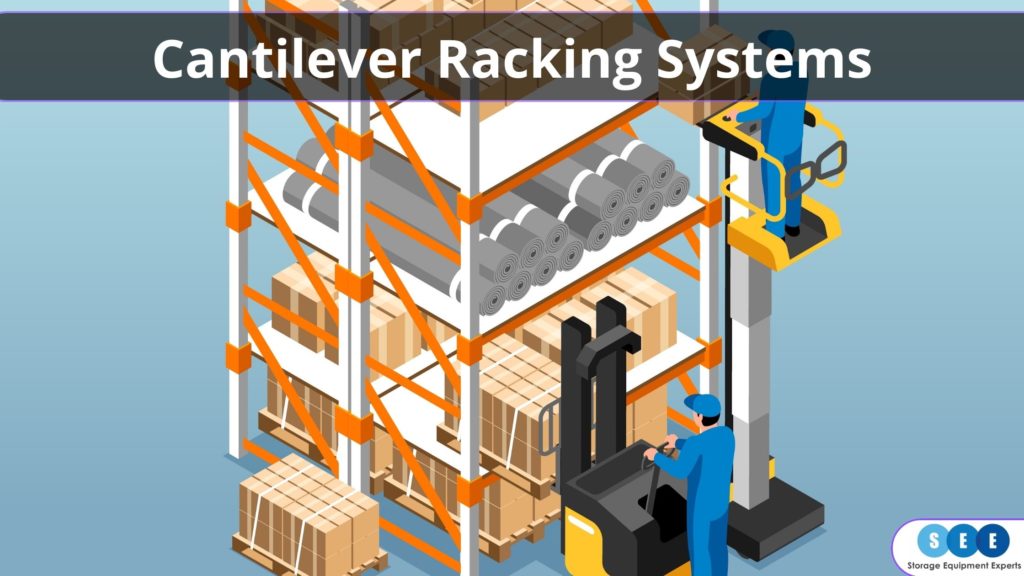
If you’re running a warehouse or distribution centre, then you have a deeper insight than most into potentially the most important part of the set-up – the racking systems. These storage units are the lynchpin of effective operations, letting you maximize the space you have while also increasing efficiency in storing/picking.
Of course, choosing the right pallet racking systems is complex. There’s a range of different types of racking you have to choose from – each with its own benefits, ideal use cases, and (of course) price points.
In this blog, we’ll take a look at some of the more popular racking options and show the cost-benefit of each. The goal is to provide you with all the information you need to make an informed, data-driven decision for your own warehouse operations.
Understanding Pallet Racking Systems
Pallet racking systems, the structural foundation for warehouse organization, vary widely in design – each tailored to specific storage needs. Here’s a quick rundown:
- APR (Adjustable Pallet Racking) Racking Systems – Flexible and accessible, perfect for a variety of goods.
- Drive-In/Drive-Through Systems – Ideal for high-density storage of similar items.
- Push-Back Racking Systems – Enhances storage density and accessibility, suitable for high-turnover stock.
- Cantilever Racking Systems – Best for long, bulky items, optimizing space and accessibility.
Key Factors Affecting Cost and Benefit
Evaluating a racking system’s value involves considering multiple factors:
- Installation Expenses
- Storage Capacity
- Space Utilization
- Product Accessibility
- System Scalability
These elements influence both the immediate investment and the long-term operational gains, guiding warehouses towards efficient and cost-effective operations.
Individual Cost-Benefit Analyses
APR (Adjustable Pallet Racking) Systems
APR (Adjustable Pallet Racking) racking stands out for its flexibility and accessibility, making it a go-to option for a wide array of warehouses. Here’s what sets it apart:
- Accessibility: Every pallet is directly accessible, simplifying stock management.
- Versatility: Adapts easily to various product sizes and weights, accommodating diverse inventory.
- Common Use Cases: Ideal for warehouses with a broad product range requiring frequent access.
Businesses with fluctuating stock levels or those that handle a variety of goods will find APR (Adjustable Pallet Racking) an invaluable asset.
Initial Costs vs. Operational Benefits: Affords direct access to all pallets, streamlining inventory management.
Ideal Use Cases: Warehouses needing frequent access to a diverse product range.
Drive-In/Drive-Through Racking
Drive-in and drive-through racking systems are designed for high-density storage, minimizing floor space usage while maximizing storage capacity. Key features include:
- High-Density Storage: Stores pallets deeply in multiple rows, reducing aisle space.
- Design Features: Drive-in racking has entry points at one end, while drive-through allows entry from both ends, enhancing flow-through efficiency.
- Ideal For: Operations with large quantities of similar items and a Last In, First Out (LIFO) or First In, First Out (FIFO) inventory management system.
Businesses looking to optimize space in their warehouse, particularly those with seasonal goods, will benefit greatly from these systems.
Cost Structure: Higher upfront and maintenance costs, offset by space maximization.
When It Shines: Best for uniform product storage, maximizing space efficiency.
Push-Back Racking Systems
Push-back racking systems offer an ingenious solution for storing multiple pallets in a single lane. Their standout aspects include:
- Increased Density: Pallets are stored on wheeled carts that push back along inclined rails, allowing deep storage.
- Operational Efficiency: Facilitates easy access and storage, enhancing warehouse throughput.
- Who Benefits: Warehouses that require high-density storage without sacrificing selectivity – perfect for rotating stocks or those with intermediate turnover rates.
Companies aiming to increase storage density while maintaining good access to a variety of SKUs will find push-back racking to be an excellent choice.
Investment and Returns: Offers a balance of higher initial costs with operational efficiencies in space use and access.
Optimal Conditions: High turnover environments with palletized goods.
Cantilever Racking Systems

Cantilever racking is uniquely designed to store long, bulky items efficiently. Its distinct advantages include:
- Open Fronts: No front columns, allowing storage of various lengths and facilitating easy loading and unloading.
- Adjustability: Arms can be adjusted to different heights to accommodate different item sizes.
- Use Cases: Exceptionally suited for storing materials like lumber, pipes, and furniture.
Industries dealing in construction materials, home goods, or any sector requiring the storage of long, awkward items will find cantilever racking an indispensable solution.
Cost-Benefit Dynamics: Specialized for long, bulky items, though potentially more costly, they excel in specific storage scenarios.
Best Fit: Operations that require easy access to and storage of oversized items.
Choosing Wisely for Your Warehouse
Selecting the perfect pallet racking systems for your warehouse is no simple purchase decision – it’s a strategic investment in your operation’s future. This decision-making process requires a comprehensive assessment of several key aspects:
Operational Demands
Consider the nature of your stock, from size and weight to turnover rate. How accessible do your items need to be? Will you be storing a wide variety of goods, or is your stock more uniform?
Budgetary Limits
Initial costs can vary widely between racking systems, but so can their impact on long-term operational costs. Factor in not only the purchase and installation expenses but also the potential savings in space optimization and improved efficiency.
Future Growth Expectations
Anticipate the evolution of your warehouse operations. Can the racking system scale or adapt as your business grows? Is it flexible enough to accommodate future changes in inventory or operations?
This holistic approach ensures that your chosen system not only meets your current needs but also adapts to future challenges, safeguarding your investment against obsolescence.
Conclusion
The right pallet racking system, chosen with foresight and understanding, can dramatically enhance storage efficiency and operational dynamics, steering your warehouse towards achieving its strategic objectives.
With careful consideration and strategic planning, your choice will lay the foundation for a resilient, efficient, and scalable warehouse operation, ensuring a competitive edge in the logistics landscape. Find out more on the SEE Racking Inspections blog.





